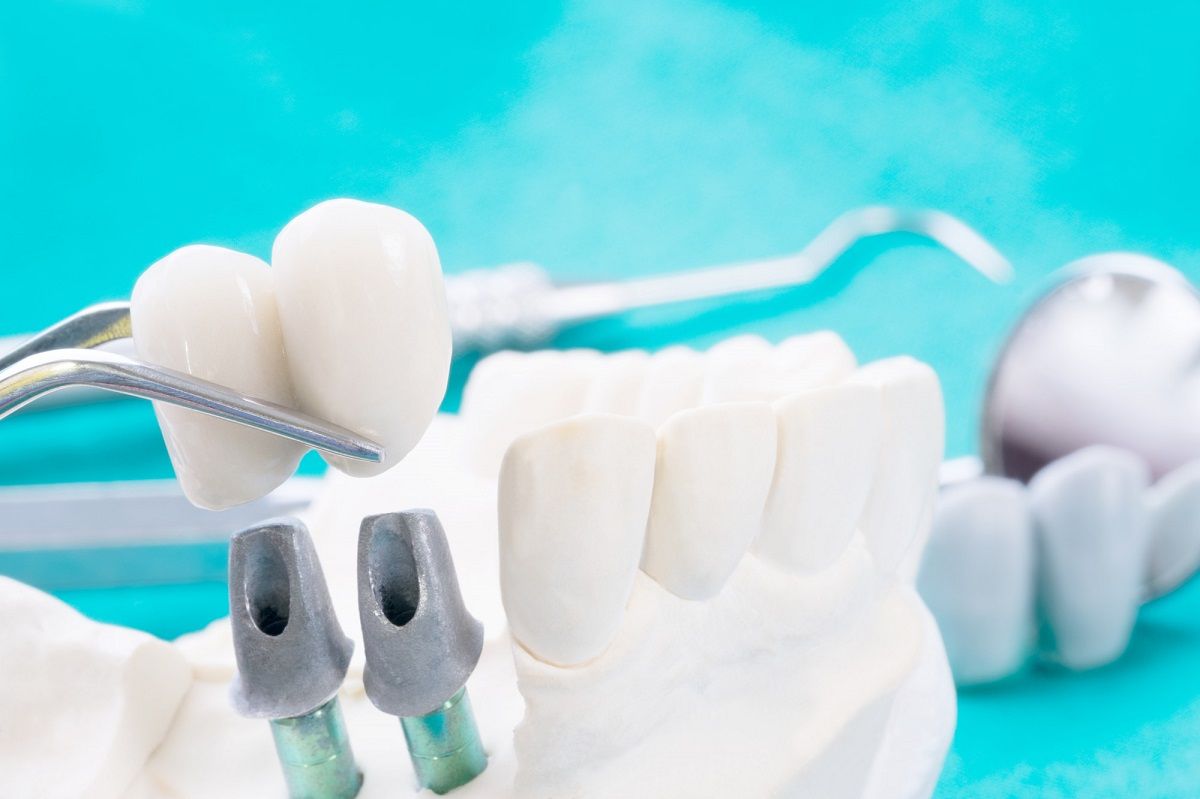A radiant smile can boost confidence and leave a lasting impression. In modern dentistry, dental bridges have become a popular solution for replacing missing teeth, seamlessly restoring appearance and functionality.
However, knowing the potential complications that can arise during and after the procedure is crucial. By understanding these risks and limitations, you can confidently make informed decisions about your oral health and embark on your dental journey.
Dental bridges serve as a bridge between the gaps left by missing teeth, providing a natural-looking and functional solution. They consist of artificial teeth, known as pontics, anchored to adjacent teeth or dental implants for support. While dental bridges offer numerous benefits, it is essential to be mindful of the potential complications that may arise.
Discussing these risks and limitations with your dentist will provide you with a better understanding of how they may specifically apply to your situation. Your dentist will be crucial in guiding you through the decision-making process, providing expert advice, and assisting you in determining the most suitable treatment plan to restore your smile and overall oral health.
Navigating Potential Complications in Dental Bridge Treatment
While dental bridges offer significant benefits, such as restoring your smile and improving oral function, it is essential to approach the process with a comprehensive understanding of the complications involved. Let’s get to know these.
- Tooth sensitivity:
Following the placement of a dental bridge, it is not uncommon to encounter a temporary sensitivity in the treated teeth when exposed to hot or cold temperatures. This sensitivity usually results from tooth preparation and should subside over time. If the sensitivity persists or worsens, it is essential to consult your dentist.
- Discomfort or soreness:
It is common to experience mild discomfort or soreness in the gums and surrounding tissues after getting a dental bridge. This discomfort is typically temporary, and over-the-counter pain relievers can help manage it.
- Infection or gum disease:
If proper oral hygiene is not maintained, bacteria can accumulate around the dental bridge and the supporting teeth, leading to infection or gum disease. Regular brushing, flossing, and professional cleanings are crucial to prevent such complications.
- Failed or loose bridge:
A dental bridge may sometimes become loose or dislodged. It may happen due to weakened supporting teeth, poor oral hygiene, or excessive force exerted on the bridge. Visit your dentist if you notice any movement or looseness of your dental bridge.
- Damage to supporting teeth:
Preparing adjacent teeth to support the dental bridge involves removing a portion of their enamel. This alteration can weaken the supporting teeth, making them more susceptible to fractures or decay.
- Bite misalignment:
An ill-fitted dental bridge causes an improper bite alignment. It can lead to discomfort while chewing, jaw pain, or even temporomandibular joint (TMJ) issues.

- Allergic reactions:
In rare cases, some individuals may be allergic to the materials used in the dental bridge, such as metal alloys or certain ceramics. It is imperative to contact your dentist promptly if you experience any unusual symptoms or signs of an allergic reaction.
Risks and Limitations of Dental Bridges
Dental bridges offer a promising solution for those seeking to restore their smile and regain functionality after tooth loss. However, it is crucial to understand this treatment’s potential risks and limitations. So, let’s get started.
- Recurrent decay:
Dental bridges, although made from durable materials, can still develop cavities over time. The areas where the bridge attaches to the supporting teeth are particularly susceptible to plaque accumulation and decay. Proper oral hygiene practices are imperative to minimize the risk of recurrent decay.
- Need for periodic replacement:
Dental bridges do not last a lifetime. Over time, the bridge may experience wear and tear, chipping, or other damage that may necessitate repair or replacement. The longevity of a dental bridge depends on factors such as oral hygiene, habits (e.g., teeth grinding), and regular dental care. Following your dentist’s recommendations for care, maintenance, and regular check-ups can help prolong the lifespan of your dental bridge.
- Difficulty with oral hygiene:
Cleaning around and underneath dental bridges can be more challenging than natural teeth. To effectively remove plaque and debris from these hard-to-reach areas, you may need to use floss threaders or interdental brushes. It is essential to maintain meticulous oral hygiene practices and to schedule regular dental cleanings and check-ups to ensure the cleanliness and longevity of the dental bridge.
- Aesthetic concerns:
While dental bridges blend with natural teeth, slight variations in color or shape may affect the overall aesthetics. Your dentist will work with you to ensure the best possible match and appearance of your dental bridge. Having realistic expectations and open communication with your dentist regarding your desired aesthetic outcomes is essential.
- Dietary restrictions:
Sticky or hard foods can damage or dislodge the bridge. It is advisable to exercise caution and make dietary adjustments to avoid putting excessive pressure on the bridge and compromising its stability. Your dentist can provide specific nutritional recommendations based on your dental bridge and oral health status.

- Limited durability compared to natural teeth:
While dental bridges are durable, natural teeth may be more resilient. Teeth grinding or biting on stiff objects can significantly impact the longevity of the dental bridge. Maintaining proper oral hygiene practices, avoiding harmful habits, and promptly addressing any concerns or issues with your dentist can help expand the longevity of your dental bridge.
- Cost:
Dental bridges can involve a significant financial investment. The cost includes the initial treatment, materials, and potential maintenance or replacement expenses. The exact cost of a dental bridge varies depending on various factors. Therefore, discussing the financial aspects with your dentist beforehand is best.
- Gum recession:
In some cases, a dental bridge can contribute to gum recession, leading to increased tooth sensitivity, an increased risk of decay on the exposed roots, and potential aesthetic concerns. Consistently practicing good oral hygiene habits, such as thorough brushing and flossing, coupled with regular visits to your dentist, can play a crucial role in monitoring and addressing any potential gum recession.
- Bone resorption:
When a tooth is lost, the underlying jawbone may begin to shrink or resorb over time. While dental bridges can provide functional and aesthetic benefits, they do not stimulate the underlying jawbone like natural teeth or dental implants. It can lead to bone resorption, where the tooth is lost. Discussing long-term options for preserving jawbone health with your dentist is essential.
- Incompatibility with certain oral conditions:
Dental bridges may not be suitable for everyone, particularly individuals with specific oral health conditions or limitations. If you have significant gum disease, inadequate jawbone structure, or multiple missing teeth in a row, your dentist may recommend alternative tooth replacement options such as dental implants or dentures.
- Impact on adjacent teeth:
In some cases, the preparation and placement of a dental bridge can place added stress on the adjacent teeth that support the bridge. This increased stress can cause damage to those teeth over time. Regular dental check-ups and monitoring are crucial to assess the health of the supporting teeth and address any issues promptly.
Final Words
While these risks and limitations of dental bridges exist, they do not necessarily occur in every case. Your dentist will thoroughly evaluate your dental health, discuss any potential hazards or restrictions specific to your situation, and help you make an informed decision regarding dental bridge treatment or explore alternative options if necessary.
Contact your Pinole dentist, Azadeh Hosseini, DDS, or Ghazal Hosseini, DDS, at Top Pinole Dental to learn about the Potential Complications of Dental Bridges: Risks and Limitations.
Resource:
Pros And Cons Of Dental Bridges
*This media/content or any other on this website does not prescribe, recommend, or prevent any treatment or procedure. Therefore, we highly recommend that you get the advice of a qualified dentist or other medical practitioners regarding your specific dental condition.*
1500 Tara Hills Dr., Suite 104A, Pinole, CA 94564
Monday – Saturday 8:00 AM to 5:00 PM
